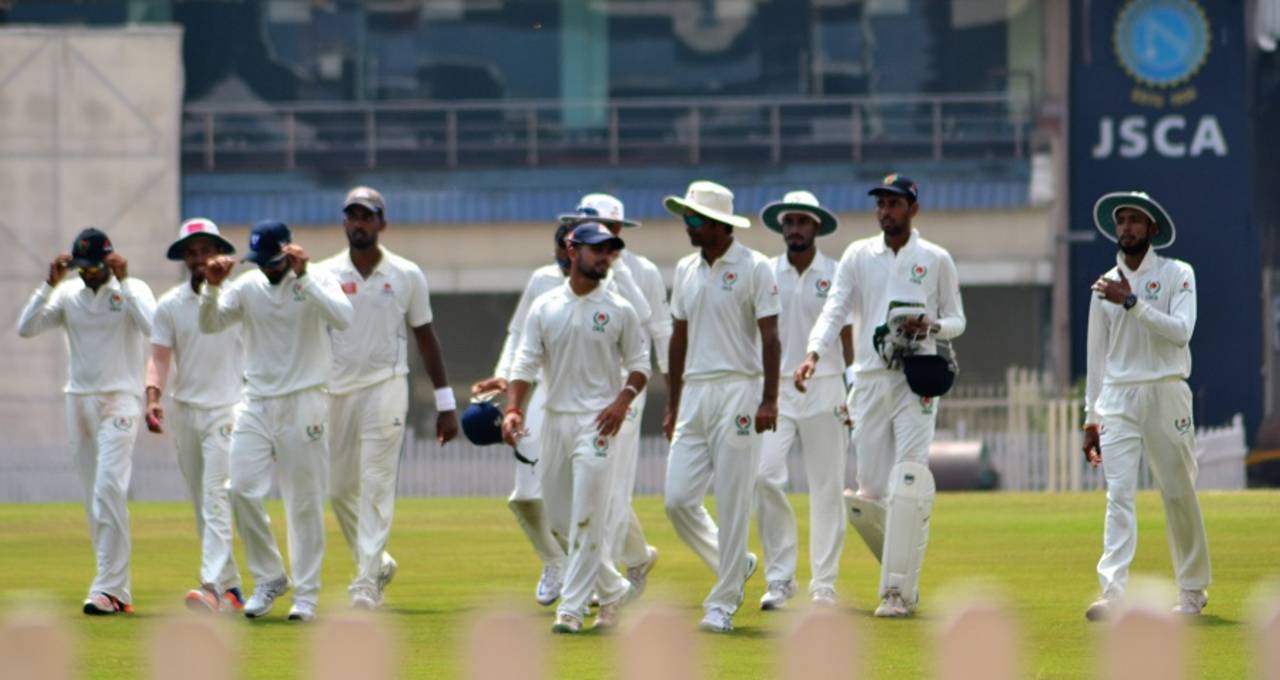The neutral-venue system in the Ranji Trophy is set to be scrapped after the BCCI's technical committee recommended a return to the home-and-away format for the league stage in the 2017-18 season. The knockout matches, however, will continue to be played at neutral venues. This marks the end of a short-lived experiment with the neutral-venue policy that was mooted last year by the Sourav Ganguly-led committee, which was appointed to make domestic cricket more competitive. However, given the
strident opposition to the system from captains and coaches alike, the committee had to revert to the old format where each team played an equal number of matches at home and away.
"We have reverted to home-and-away format because of logistical reasons, [and] even the players and captains wanted this," Ganguly told reporters. "The matches will be less now; it was becoming too long a season. [State] associations also wanted to see their teams play at the home venue. It was on a trial basis and now we wanted to go back to the original format."
The committee has also recommended that the 28 teams in the competition be divided into four pools each as opposed to three in previous years. This would mean that teams will now play only six games each in the league phase. The Duleep Trophy, however, has been left unaltered and will continue to be played with the pink ball. The new format was trialled last year. These recommendations will now have to be ratified by the board's working committee.
"There will be a change from the past as far as Ranji Trophy is concerned," BCCI acting secretary Amitabh Choudhary said at the end of the meeting of the technical committee. "All league matches will be home and away as it was two seasons ago. The committee has also decided that for junior cricket - while the home-and-away system will continue for league matches - the knockout matches will again be at neutral venues. The Ranji Trophy as of now will start on October 6."
Chaudhary said that the inclusion of Chhattisgarh last year had necessitated the creation of four pools. "Because of the addition of Chhattisgarh last year, the total number of teams in the Ranji Trophy became 28 and, as you are aware, led to a skewed setup of Ranji Trophy with nine+nine+ten [teams in three groups respectively]," Choudhary said.
It is, however, unclear how the teams will be grouped: will the weaker teams be staged across the four pools or clustered into one or two groups, or if there is going to be a relegation system. The change, as it stands, didn't find favour with some coaches.
Andhra coach Sanath Kumar felt it reduced the number of opportunities for a player in a season. "The whole idea of dividing [teams] into three groups was mainly because they wanted to give more first-class games," he told ESPNcricinfo. "In countries like England, they play more than 15 first-class games in a season, but I don't understand why the number has been reduced to six here." He also reckoned a relegation system is unlikely to be constituted. "How will there be relegation when there are four groups? The whole spice of trying to go up from Plate to Elite [weaker group to stronger] is gone."
Tamil Nadu coach
Hrishikesh Kanitkar said there were different thoughts on teams being split into four groups during the
captains' and coaches enclave held in May, but there was no vehement opposition. "If somebody doesn't start the season in a good form, he hardly has any time to come back and loses the whole season if his team doesn't qualify," he said.
Among several other issues discussed at the conclave, increasing the wages of domestic cricketers was one. While Kanitkar said the issue was raised by many captains and coaches during the meeting, there was yet to be any clarity on the BCCI's position on the issue. "It is their livelihood," Kanitkar said. "Right now they are stuck between finding a job and playing. If you want them to devote their time to get better and have newer players coming into the system, you need to have some financial incentive."
The other major bones of contention during the conclave were, according to Sanath, the poor standard of umpiring last year and the gap between games. "There are only three-day breaks between games at the moment," he said. "But, with two fewer games, I think there will be more gap, so that is one good thing."
The decision to go back to the home-and-away format, though, was welcomed by many. Chhattisgarh captain
Mohammad Kaif said it would offer an opportunity for the local crowd to cheer its players. "It is a big thing for us," he said. "Last time we played Ranji for the first time and all the matches were outside. This time the local crowd can enjoy, so all the kids can come and watch us play. Being a new state, it is a great thing for local people to watch their local heroes play."
A former state association official felt the neutral-venue format had increased the travel and accommodation expenditure for the board's member units last season. "With the state associations not receiving any money from the board - the funds won't be released until they adopt the Lodha Committee's recommendations - their reserves have already been exhausted. I don't know how many of these units are going to manage the upcoming season."
Arun Venugopal is a correspondent at ESPNcricinfo. @scarletrun
